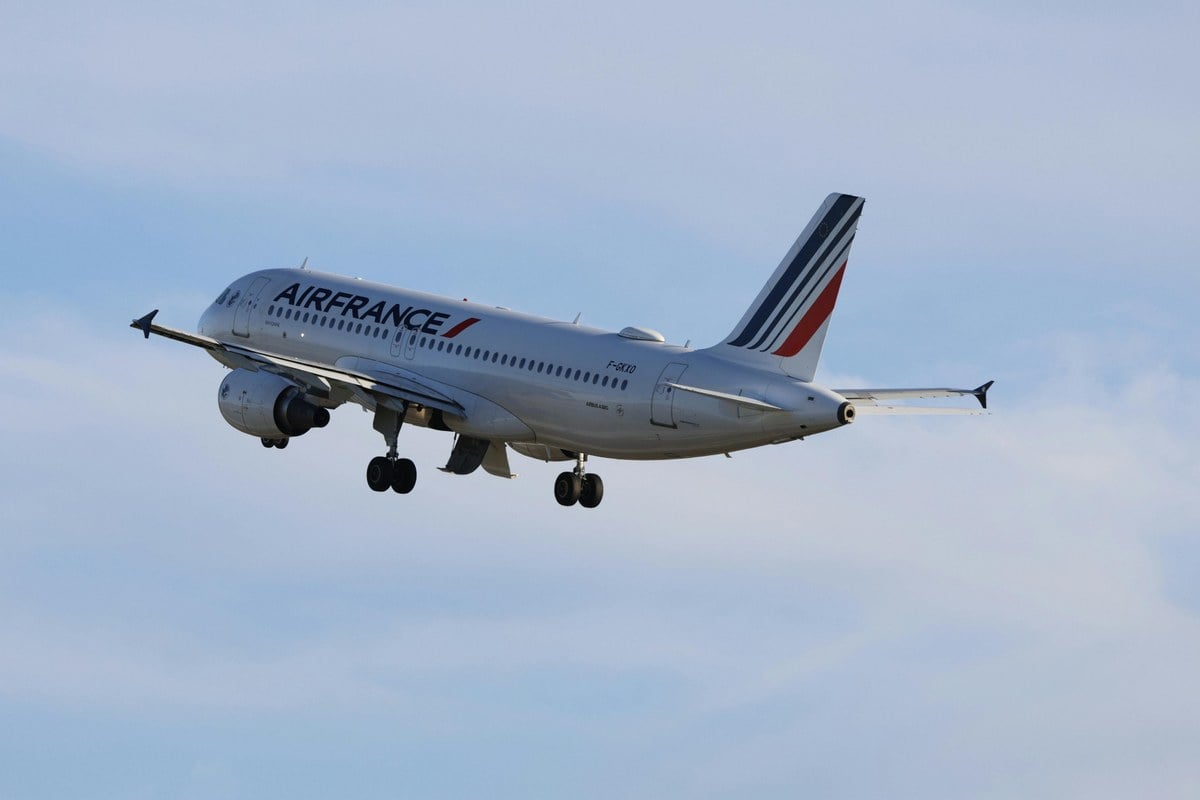(MIRABEL) Airbus and Air France on August 25, 2025 completed the first-ever delivery of an Airbus A220 powered by a 50% Sustainable Aviation Fuel (SAF) blend on its ferry flight from Mirabel, Canada, to Paris. Both companies announced the milestone the same day, calling it a concrete step in their plans to cut emissions and speed up the use of cleaner fuel in commercial aviation.
Airbus said 78% of its aircraft deliveries in the first half of 2025 included a SAF blend, a sharp rise that shows airlines are moving from pilots and trials to routine use. For Air France, the A220 sits at the heart of a fleet renewal drive focused on modern, efficient jets.

What happened on August 25, 2025
- The delivery flight used a 50% SAF blend, the current maximum allowed under international fuel standards for commercial flights.
- Airbus coordinated with fuel suppliers at Mirabel to source and blend certified SAF so the new aircraft could be ferried home on a cleaner flight.
- Post-flight emissions data was collected after landing for reporting and analysis to track progress and inform regulators and future supply planning.
This operation was conducted as a standard ferry flight, not a one-off ceremony—Airbus’ approach is to make SAF availability at handover a practical, repeatable step.
Why the 50% blend matters
- 50% is the current regulatory maximum for commercial operations under international standards, so this flight used the highest allowable mix today.
- Using SAF now reduces lifecycle emissions immediately, rather than waiting for future technologies.
- Europe’s ReFuelEU Aviation policy, in force in 2025, mandates a steady increase in SAF at EU airports and is expected to boost both supply and demand. Official information: https://transport.ec.europa.eu/transport-modes/air/sustainable-aviation-fuels-refueleu-aviation_en.
The role of the A220 in Air France’s strategy
- Air France says the A220 helps lower emissions per passenger-kilometer and supports European and French climate targets.
- The A220 family offers up to 25% lower fuel burn and CO2 emissions compared with the aircraft it replaces, and this advantage compounds when SAF is added.
- Because short- and medium-haul flying makes up a large share of Air France’s network, a more efficient narrowbody is central to daily operations and long-term emissions goals.
Airbus’ SAF delivery program
- Airbus expands a SAF delivery option by coordinating with suppliers to blend certified SAF at the departure airport, making clean handovers routine.
- The company collects emissions data from these deliveries to support reporting and planning.
- The share of deliveries using SAF is a key metric: Airbus reported 78% of deliveries in H1 2025 included a SAF blend, suggesting the option is becoming standard practice at handover.
Financial and leasing support: ABL Aviation
- ABL Aviation, a major lessor involved in Air France’s A220 program, emphasized both environmental and operational gains.
- The A220 delivered on August 25 falls under a 16-aircraft mandate managed by ABL for Air France, with 11 aircraft delivered as of April 2025.
- Lessors’ buy-in can speed adoption by scaling new aircraft types across fleets and aligning financing with fuel and fleet changes.
Fleet scale and fleet renewal context
- By May 2025, Air France’s A220 fleet reached 43 aircraft, placing the carrier among the world’s top five A220 operators.
- A growing A220 fleet increases opportunities to blend SAF into routine operations as supply expands and helps advance company-wide emissions targets.
- The August 25 delivery reinforces the broader trend: more modern aircraft entering service, more SAF blended where standards allow, and steady data-gathering to back decisions.
Constraints and industry reaction
- Analysts point to cost and availability as near-term constraints for SAF: it generally costs more and is harder to source than conventional jet fuel.
- High-profile deliveries like Mirabel–Paris can help by:
- Signaling demand to producers,
- Creating predictable offtake that encourages investment,
- Increasing supplier confidence and scale.
- Environmental groups support the move but urge faster expansion of SAF supply and broader use beyond delivery flights.
- Airline executives describe SAF as a bridge technology toward net zero while zero-emission aircraft options mature.
Practical, repeatable model from the operation
- Airbus arranged certified SAF at Mirabel with suppliers.
- SAF was blended to 50% and used for the ferry flight.
- The flight operated normally; after landing, data was recorded for internal and external reporting.
- This documentation is vital for verifying progress against climate plans and meeting 2025 European reporting needs.
Policy, product, and operations alignment
- The delivery demonstrates alignment between policy (ReFuelEU Aviation), product (A220’s efficiency), and operations (SAF-enabled handovers).
- Air France aims for 10% SAF across all flights by 2030, in line with EU targets—achieving this will require coordination among aircraft makers, airlines, lessors, airports, and fuel producers.
Communications and sources
- Airbus maintains a newsroom with program and delivery information at https://www.airbus.com/en/newsroom.
- Air France provides corporate news and sustainability goals at https://corporate.airfrance.com.
- Details on ABL Aviation’s support can be found at https://ablaviation.com.
- Official information on ReFuelEU Aviation: https://transport.ec.europa.eu/transport-modes/air/sustainable-aviation-fuels-refueleu-aviation_en.
Key takeaways
- The Mirabel–Paris delivery combined three linked threads:
- A modern, efficient
Airbus A220; - A 50% SAF blend—the highest allowed today;
- A European policy backdrop set to increase SAF use.
- A modern, efficient
- With 78% of Airbus deliveries in early 2025 including a SAF blend, the industry is building experience and supply-chain capability that can scale up routine SAF use across networks.
- While the handover does not change fares or schedules, it strengthens supply, handling know-how, and regulatory data—practical building blocks for a larger industry shift.
This Article in a Nutshell
On August 25, 2025 Airbus and Air France delivered an A220 from Mirabel to Paris using a 50% SAF blend—the regulatory maximum—while Airbus reported 78% of H1 2025 deliveries included SAF. The move supports Air France’s fleet renewal and EU decarbonization policy, though SAF scaling faces cost and supply constraints.













